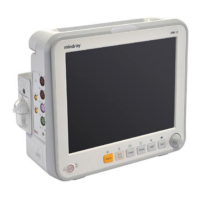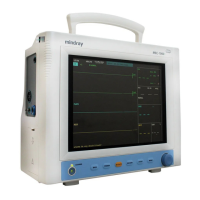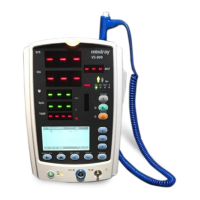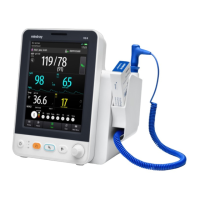8-1
8 Monitoring ECG
8.1 Introduction
The electrocardiogram (ECG) measures the electrical activity of the heart and displays it on
the patient monitor as a waveform and a numeric. ECG monitoring provides two
algorithms:
1. Basic algorithm
The Basic algorithm enables 3-, 5- or 12-lead ECG monitoring, ST-segment analysis,
arrhythmia analysis and interpretation of resting 12-lead ECG.
2. Mortara algorithm
The Mortara algorithm enables 3-, 5- or 12-lead ECG monitoring, ST-segment analysis
and arrhythmia analysis.
You can select either algorithm as required. For the patient monitor incorporating the
Mortara algorithm, interpretation of resting 12-lead ECG in the Basic algorithm is optional.
For the patient monitor incorporating the Mortara algorithm, there is a Mortara logo at the
monitor’s front.
8.2 Safety
WARNING
z Use only ECG electrodes and cables specified in this manual.
z When connecting electrodes and/or patient cables, make sure that the connectors
never come into contact with other conductive parts, or with earth. In particular,
make sure that all of the ECG electrodes are attached to the patient, to prevent
them from contacting conductive parts or earth.
z Periodically inspect the electrode application site to ensure skin quality. If the skin
quality changes, replace the electrodes or change the application site.
z Use defibrillator-proof ECG cables during defibrillation.
z Do not touch the patient, or table, or instruments during defibrillation.
z After defibrillation, the screen display recovers within 10 seconds if the correct
electrodes are used and applied in accordance with the manufacturer’s instructions
for use.
z Interference from a non-grounded instrument near the patient and electrosurgery
interference can cause problems with the waveform.

